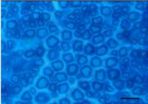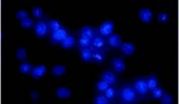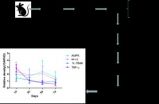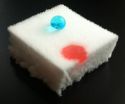(Press-News.org) An antioxidant that targets specific cell structures—mitochondria—may be able to reverse some of the negative effects of aging on arteries, reducing the risk of heart disease, according to a new study by the University of Colorado Boulder.
When the research team gave old mice—the equivalent of 70- to 80-year-old humans—water containing an antioxidant known as MitoQ for four weeks, their arteries functioned as well as the arteries of mice with an equivalent human age of just 25 to 35 years.
The researchers believe that MitoQ affects the endothelium, a thin layer of cells that lines our blood vessels. One of the many functions of the endothelium is to help arteries dilate when necessary. As people age, the endothelium is less able to trigger dilation and this leads to a greater susceptibility to cardiovascular disease.
"One of the hallmarks of primary aging is endothelial dysfunction," said Rachel Gioscia-Ryan, a doctoral student in CU-Boulder's Department of Integrative Physiology and lead author of the new study. "MitoQ completely restored endothelial function in the old mice. They looked like young mice."
The study, published in the Journal of Physiology, was funded by the National Institute on Aging, one of the 27 institutes and centers of the National Institutes of Health and a leader in the scientific effort to understand the nature of aging.
To trigger blood vessel dilation, the endothelium makes nitric oxide. As we age, the nitric oxide meant to cause dilation is increasingly destroyed by reactive oxygen species such as superoxide, which are produced by many components of our body's own cells, including organelles called mitochondria.
In a double-whammy, superoxide also reacts directly with the enzyme that makes nitric oxide, reducing the amount of nitric oxide being produced to begin with. All of this means less blood vessel dilation.
Even in the young and healthy, mitochondria produce superoxide, which is necessary in low levels to maintain important cellular functions. Superoxide is kept in check by the body's own antioxidants, which combine with superoxide to make it less reactive and prevent oxidative damage to cells.
"You have this kind of balance, but with aging there is this shift," said Gioscia-Ryan, who works in Professor Douglas Seals' Integrative Physiology of Aging Laboratory at CU-Boulder. "There become way more reactive oxygen species than your antioxidant defenses can handle."
That phenomenon, known as oxidative stress, occurs when the cells of older adults begin to produce too much superoxide and other reactive oxygen species. Mitochondria are a major source of superoxide in aging cells. The increased superoxide not only interacts with nitric oxide and the endothelium, but can also attack the mitochondria themselves. The damaged mitochondria become increasingly dysfunctional, producing even more reactive oxygen species and creating an undesirable cycle.
Past studies have looked at whether taking antioxidant supplements long term could improve vascular function in patients with cardiovascular disease by restoring balance to the levels of superoxide, but they've largely shown that the strategy isn't effective.
This new study differs because it uses an antioxidant that specifically targets mitochondria. Biochemists manufactured MitoQ by adding a molecule to ubiquinone (also known as coenzyme Q10), a naturally occurring antioxidant. The additional molecule makes the ubiquinone become concentrated in mitochondria.
"The question is, 'Why aren't we all just taking a bunch of vitamin C?" Gioscia-Ryan said. "Scientists think that, taken orally, antioxidants like vitamin C aren't getting to the places where the reactive oxygen species are being made. MitoQ basically tracks right to the mitochondria."
The findings of the study indicate that the strategy of specifically targeting the mitochondria may be effective for improving the function of arteries as we age. In addition to improving endothelial function, the MitoQ treatment increased levels of nitric oxide, reduced oxidative stress and improved the health of the mitochondria in the arteries of old mice.
INFORMATION:
Other CU-Boulder co-authors of the study include postdoctoral researchers Thomas LaRocca and Amy Sindler, professional research assistant Melanie Zigler and Seals. Professor Michael Murphy of the Medical Research Council's Mitochondrial Biology Unit in Cambridge, England, who helped develop MitoQ, also is a co-author. MitoQ is manufactured by MitoQ Ltd., and is available as a dietary supplement and skin cream.
The study was supported by award number T32AG000279 from the National Institute on Aging. The content of the published study is solely the responsibility of the authors and does not necessarily represent the official views of the National Institutes of Health.
Novel antioxidant makes old arteries seem young again, CU-Boulder study finds
2014-05-06
ELSE PRESS RELEASES FROM THIS DATE:
Cataract surgery decreases risk of falls in older patients
2014-05-06
Orlando, Fla. — New research finds that cataract surgery dramatically decreases the number of falls individuals suffer due to poor vision. The research is being presented at the 2014 Annual Meeting of the Association for Research in Vision and Ophthalmology (ARVO) this week in Orlando, Fla.
In a study of more than 400 Vietnamese patients who were 50-plus years old with cataracts in both eyes, the number of falls patients suffered before and after cataract surgery was monitored. Researchers found a 78% decrease in the risk of falls the year after patients had cataract ...
Simulated model of eye's 3D structure facilitates stem cells transplant
2014-05-06
Orlando, Fla. — Scientists have developed a model that mimics the complex structure of the cornea to enable the transplant of healthy corneal stem cells. The research is being presented at the 2014 Annual Meeting of the Association for Research in Vision and Ophthalmology (ARVO) this week in Orlando Fla.
Used to restore sight, corneal stem cells live in a specific physical environment. Transplanting these stem cells requires accurate mimicry of their natural surroundings during transport. In this work, vision scientists have recreated the 3D architecture where corneal ...
Astronomers harness the galaxy's biggest telescope
2014-05-06
An international team of astronomers has made a measurement of a distant neutron star that is one million times more precise than the previous world's best.
The researchers were able to use the interstellar medium, the 'empty' space between stars and galaxies that is made up of sparsely spread charged particles, as a giant lens to magnify and look closely at the radio wave emission from a small rotating neutron star.
This technique yielded the highest resolution measurement ever achieved, equivalent to being able to see the double-helix structure of our genes from the ...
A novel transgenic mouse model of Chinese Charcot-Marie-Tooth disease type 2L
2014-05-06
Dr. Ruxu Zhang and colleagues from Third Xiangya Hospital, Central South University in China previously found that the K141N mutation in heat shock protein B8 (HSPB8) was responsible for Charcot-Marie-Tooth disease type 2L in a large Chinese family. Therefore, they generated a transgenic mouse model bearing the K141N mutation in the human HSPB8 gene, and to determine whether this K141NHSPB8 transgenic mouse model would manifest the clinical phenotype of Charcot-Marie-Tooth disease type 2L, and consequently be suitable for use in studies of disease pathogenesis. The K141NHSPB8 ...
Regulatory effects of glial cells on retinal synaptic plasticity
2014-05-06
Different types of retinal damage could induce plastic changes of retinal synapses, which might precede the serious damage of neuron soma. These morphological and functional changes to synapses after retinal injury could explain why many intervention measures protected neurons from death but failed to fully recover the damaged visual function. Therefore, it is necessary to investigate both the protection of synapses as well as protecting neurons from death. Dr. Lihong Zhou and co-workers from Central South University in China suggested that retinal glial cell activation ...
The Pael-R gene does not mediate the changes in rotenone-induced PD model cells
2014-05-06
Currently, the pathogenesis of Parkinson's disease is not entirely clear, but it has been generally considered to be the result of interactions among various genetic and environmental factors. Ting Zou and coworkers from Second Xiangya Hospital, Central South University in China previously found that Parkin mutation causes Parkin-associated endothelin receptor-like receptor (Pael-R) protein deposition, and the associated cytotoxicity leads to dopaminergic neuronal apoptosis. These researchers speculated that the Pael-R gene is possibly involved in the action of rotenone ...
AMPK and inflammatory mediators are involved in postoperative cognitive dysfunction
2014-05-06
Postoperative cognitive dysfunction is associated with neuronal apoptosis, which may result from post-surgery inflammation, the phosphorylation of tau protein and the accumulation of amyloid in aged people. 5′adenosine monophosphate-activated protein kinase (AMPK) can be involved in anti-inflammation, neuronal repair and anti-inflammation of the body through different downstream proteins and pathways. In addition, the activation of AMPK regulates tau protein phosphorylation and reduces amyloidogenesis in neurons. Yanlin Bi and co-workers from the Affiliated Qianfoshan ...
Danish social workers have become the moral agents of the state
2014-05-06
"We are turning the professional social workers into moral agents. This development recalls a time before the welfare state, when we had poor relief and when the extent to which the state could help you depended on your own dignity."
This is the assertion by Marie Østergaard Møller, who is associate professor at the Department of Political Science and Government, Aarhus University regarding the labour market policy that has been carried out in Denmark since the 1990s. More specifically, since 1994 the opportunities for citizens to get relief from the state have been reduced. ...
Hotspots of climate change impacts in Africa: Making sense of uncertainties
2014-05-06
Overlapping impacts of climate change such as drought or flooding, declining crop yields or ecosystem damages create hotspots of risk in specific parts of Africa. These are for the first time identified in a study now published by the Potsdam Institute for Climate Impact Research. The uncertainties in assessing the impacts do not necessarily hamper but can inform development strategies, according to the scientists. Likelihood and potential severity of impacts can be weighed to decide on suitable adaptation measures.
"We found three regions to be amongst those most at ...
Nanocellulose sponges to combat oil pollution
2014-05-06
All industrial nations need large volumes of oil which is normally delivered by ocean-going tankers or via inland waterways to its destination. The most environmentally-friendly way of cleaning up nature after an oil spill accident is to absorb and recover the floating film of oil. The Empa researchers Tanja Zimmermann and Philippe Tingaut, in collaboration with Gilles Sèbe from the University of Bordeaux, have now succeeded in developing a highly absorbent material which separates the oil film from the water and can then be easily recovered, "silylated" nanocellulose sponge. ...





